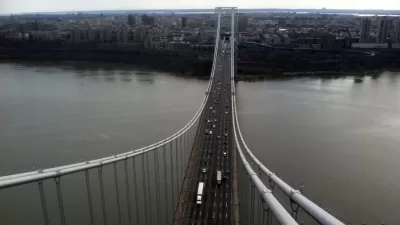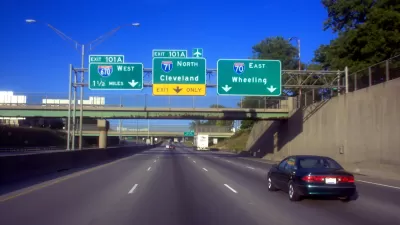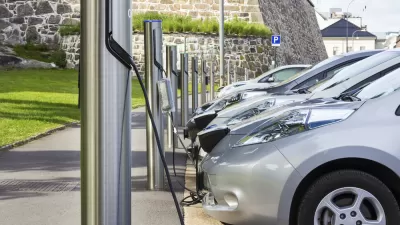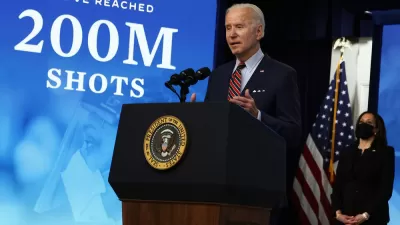To some, the agreement promises too much funding for traditional infrastructure programs rather than 'adaptations and innovations.'

[Updated July 20, 2021.]
Strong Towns' Charles Marohn argues that the proposals of the Bipartisan Infrastructure Framework will "make our infrastructure crisis worse." According to Marohn, "[s]hoveling unprecedented levels of funding into current programs prior to any serious work on reform is a terrible idea, regardless of who proposes it."
Assessing the funding outlined in the bipartisan compromise, Marohn writes:
While $5 million for active transportation sounds nice, you’ll find $4.2 billion for trunk highways in the bill. If the $5 million for Safe Routes for School gets you excited, perhaps you won’t mind the $1.7 billion for county state aid highways. That $57.5 million in bus rapid transit seems really progressive until it is compared to the $430 million being spent on municipal state aid routes (a program to essentially turn local streets into highways). Nearly half a billion dollars is going to the Department of Public Safety, with $226 million of that just for patrolling highways. We’re going to spend more in two weeks on highway patrols than we will spend in two years in the active transportation account.
Marohn proposes that "[o]ur top-down infrastructure programs need to shift to support maintenance, not expansion, and make room for the bottom-up adaptations and innovations needed to drive gains in productivity." Moreover: "[w]e should not be cheering on a bi-partisan consensus based on some simulacrum of reform while an overwhelming amount of spending is going to programs that are making us weaker as a country, as cities, and as neighborhoods."
FULL STORY: A Preview of Bi-Partisan Compromise on Infrastructure (Sorry, It's Not Good)

Study: Maui’s Plan to Convert Vacation Rentals to Long-Term Housing Could Cause Nearly $1 Billion Economic Loss
The plan would reduce visitor accommodation by 25,% resulting in 1,900 jobs lost.

North Texas Transit Leaders Tout Benefits of TOD for Growing Region
At a summit focused on transit-oriented development, policymakers discussed how North Texas’ expanded light rail system can serve as a tool for economic growth.

Why Should We Subsidize Public Transportation?
Many public transit agencies face financial stress due to rising costs, declining fare revenue, and declining subsidies. Transit advocates must provide a strong business case for increasing public transit funding.

How to Make US Trains Faster
Changes to boarding platforms and a switch to electric trains could improve U.S. passenger rail service without the added cost of high-speed rail.

Columbia’s Revitalized ‘Loop’ Is a Hub for Local Entrepreneurs
A focus on small businesses is helping a commercial corridor in Columbia, Missouri thrive.

Invasive Insect Threatens Minnesota’s Ash Forests
The Emerald Ash Borer is a rapidly spreading invasive pest threatening Minnesota’s ash trees, and homeowners are encouraged to plant diverse replacement species, avoid moving ash firewood, and monitor for signs of infestation.
Urban Design for Planners 1: Software Tools
This six-course series explores essential urban design concepts using open source software and equips planners with the tools they need to participate fully in the urban design process.
Planning for Universal Design
Learn the tools for implementing Universal Design in planning regulations.
Ascent Environmental
Borough of Carlisle
Institute for Housing and Urban Development Studies (IHS)
City of Grandview
Harvard GSD Executive Education
Toledo-Lucas County Plan Commissions
Salt Lake City
NYU Wagner Graduate School of Public Service





























